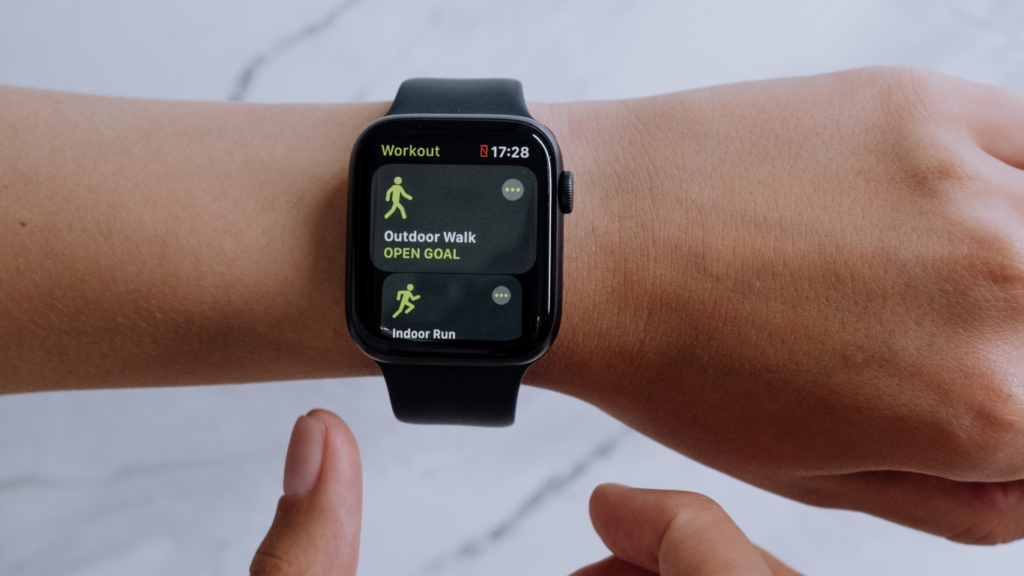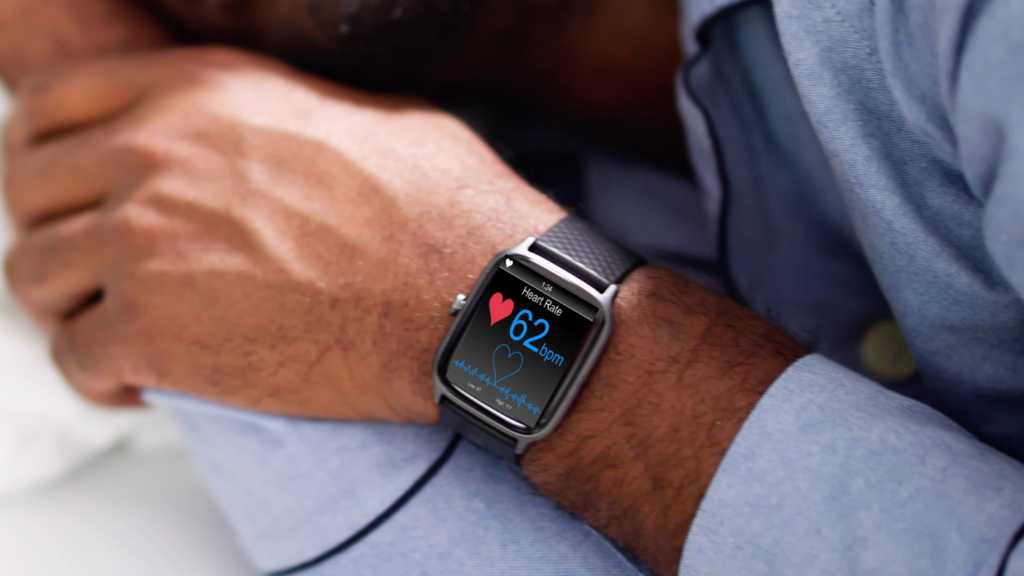The Rise of Wearable Tech
Wearable tech has seen exponential growth over the past decade. In 2022, the global market reached $116.2 billion, according to Statista. This rise can be attributed to increased consumer demand for devices that track fitness, monitor health, and provide instant notifications.
Smartwatches
Smartwatches are leading the way in wearable tech. Companies like Apple, Samsung, and Fitbit have released models that track heart rate, blood oxygen levels, and sleep patterns. The Apple Watch Series 7, for example, offers advanced health monitoring features and seamless integration with other Apple products.
Fitness Trackers
Fitness trackers focus on health metrics and are popular among fitness enthusiasts. These devices offer step counters, calorie trackers, and GPS tracking. The Fitbit Charge 5 provides detailed insights into daily activities and offers stress management tools.
AR Glasses
Augmented Reality (AR) glasses are gaining traction. These devices overlay digital information on the physical world. Microsoft’s HoloLens 2 and Google Glass Enterprise Edition 2 are notable examples, used extensively in industries like healthcare and manufacturing for training and operational efficiency.
VR Headsets
Virtual Reality (VR) headsets offer immersive experiences. Popular in gaming and entertainment, these devices are also finding applications in education and training. The Oculus Quest 2 from Meta is widely used for both recreational activities and business training programs.
Hearables
Hearables, or smart earbuds, combine audio technology with smart features. They offer noise cancellation, voice assistance, and biometric monitoring. Products like Apple’s AirPods Pro and Sony’s WF-1000XM4 lead this market with superior sound quality and smart capabilities.
Smart Clothing
Smart clothing integrates technology into textiles. Examples include shirts that monitor heart rate and pants that track muscle activity. Companies like Hexoskin and Athos are pioneering this space, offering products beneficial in both sports and medical fields.
Wearable tech continues to evolve, bringing innovative solutions to daily life. The growth trajectory shows no signs of slowing, with advancements continually enhancing functionality and user experience.
Trending Wearable Technologies
Wearable technology continues to evolve, offering new functionalities and enhanced user experiences. The following subsections explore the latest trends in various categories of wearable devices.
Smartwatches
Smartwatches are becoming increasingly multifunctional and integral in users’ daily lives. Recent models, like the Apple Watch Series 8, include advanced health monitoring features such as:
- ECG
- blood oxygen levels
- irregular heart rhythm notifications
These devices also offer seamless connectivity with smartphones, enabling users to receive calls, texts, and app notifications without taking out their phones. Enhanced battery life and improved durability make smartwatches more practical for everyday use.
Fitness Trackers
Fitness trackers cater to health-conscious users looking to monitor physical activity and wellness. The latest models, including the Fitbit Charge 5 and Garmin Vivosmart 5, come with features like advanced sleep tracking, stress management tools, and VO2 max estimates. These devices suggest actionable insights to enhance fitness routines and overall well-being. They often include water resistance, making them suitable for various physical activities, from swimming to high-intensity workouts.
Smart Glasses
Smart glasses are blending digital information with the real world more seamlessly than ever. Devices like Microsoft’s HoloLens 2 and Google Glass Enterprise Edition 2 offer augmented reality (AR) for professional and industrial use. These glasses provide heads-up displays to aid complex tasks, from engineering to medical procedures, by overlaying digital data onto physical environments. The latest advancements focus on improving battery life, expanding field of view, and ensuring a comfortable fit for prolonged use.
VR Headsets
VR headsets are revolutionizing entertainment and professional training. Devices like the Oculus Quest 2 and HTC Vive Pro 2 offer high-resolution displays and spatial audio to create immersive virtual experiences. These headsets are not only used for gaming but also for virtual meetings, educational simulations, and therapeutic applications. The emphasis on reducing latency, enhancing graphics, and offering wireless capabilities makes VR headsets increasingly versatile tools across various sectors.
Key Features of Modern Wearables
Modern wearable tech boasts impressive innovations that enhance user experience.
Health Monitoring
Health monitoring stands out as a key feature in modern wearables. Devices like the Apple Watch Series 8 and Fitbit Charge 5 track various health metrics. They measure heart rate, monitor sleep patterns, and even detect irregularities in heart rhythms. Wearables also track blood oxygen levels, which is crucial for detecting health issues early. Advanced fitness trackers, such as the Garmin Vivosmart 5, offer insights into stress levels and overall wellness, helping users maintain balanced lifestyles. These capabilities make wearables indispensable tools for proactive health management.
Connectivity
Connectivity in wearables ensures seamless communication and integration with other devices. Smartwatches like the Samsung Galaxy Watch 4 provide notifications for calls, texts, and app alerts. These devices support Bluetooth and Wi-Fi, allowing them to sync with smartphones and tablets effortlessly. Many wearables include GPS capabilities, making them valuable for navigation and activity tracking. The Google Pixel Watch, for example, integrates with Google Assistant, enabling voice commands and smart home control. Enhanced connectivity features streamline tasks and keep users connected in today’s fast-paced world.
User Interface
The user interface (UI) of modern wearables has seen significant advancements. Touchscreens with high-resolution displays, such as those on the Apple Watch Series 8, offer intuitive navigation. Customizable watch faces and widgets provide quick access to essential information. Wearables like the Fitbit Sense utilize haptic feedback, enhancing user interaction. Voice control is another key feature, allowing users to operate devices hands-free. The integration of AI assists in personalizing the user experience, making interactions with wearables more efficient and enjoyable.
Modern wearables have evolved to include sophisticated health monitoring, robust connectivity options, and intuitive user interfaces, aligning with users’ needs for convenience, efficiency, and enhanced lifestyle management.
Major Brands Dominating the Market

- Apple leads the wearable tech market. The Apple Watch Series 8 excels in health monitoring, integration with iOS, and features like ECG and blood oxygen measurement. It offers a seamless user experience, making it a popular choice among consumers.
- Samsung is another major player. The Samsung Galaxy Watch 4 stands out with its advanced health features and compatibility with Android devices. Its integration with Samsung’s ecosystem enhances user convenience.
- Garmin specializes in fitness and outdoor wearables. The Garmin Vivosmart 5 and Forerunner series are known for their robust tracking capabilities and durable design. These devices cater to athletes and outdoor enthusiasts.
- Fitbit, acquired by Google, remains a strong contender. Fitbit Charge 5 and Versa 3 offer comprehensive health tracking and compatibility with both iOS and Android. Their user-friendly interface and affordability attract a broad audience.
- Huawei is gaining traction in the wearable market. The Huawei Watch GT 3 and Band 6 provide impressive battery life and health monitoring features. Their expanding market reach indicates growing consumer trust.
Benefits of Wearable Tech
Wearable tech, such as smartwatches and fitness trackers, offers several advantages. One major benefit is its ability to monitor health and fitness. Devices track metrics like heart rate, steps, sleep patterns, and even blood oxygen levels. For example, the Apple Watch Series 8 can alert users to irregular heart rhythms.
Wearable tech also enhances connectivity. Smartwatches can sync with smartphones, enabling users to receive notifications, calls, and messages directly on their wrist. This reduces the need to constantly check their phone.
Convenience is another key advantage. Wearables can store and provide easy access to important information, like calendar schedules, weather updates, and contactless payment methods. Garmin’s Vivosmart 5, for instance, offers NFC for secure payments.
Wearable devices promote safety, especially in fitness and outdoor activities. Features like GPS tracking and fall detection help in emergencies by notifying contacts or emergency services. For example, the Samsung Galaxy Watch 4 has a built-in SOS function.
Improved performance is another benefit. Wearables can provide real-time data and feedback, helping users optimize workouts and track progress toward fitness goals. The Fitbit Charge 5 offers personalized exercise routines based on user data.
Lastly, wearables support personalized health insights. Advanced algorithms analyze collected data to give personalized recommendations. Huawei’s Watch GT 3 uses AI to suggest lifestyle changes for better health outcomes.
| Benefit | Example Device | Key Feature |
|---|---|---|
| Health and Fitness Tracking | Apple Watch Series 8 | Alerts for irregular heart rhythms |
| Enhanced Connectivity | Any Smartwatch | Syncs with smartphones |
| Convenience | Garmin Vivosmart 5 | NFC for secure payments |
| Increased Safety | Samsung Galaxy Watch 4 | Built-in SOS function |
| Improved Performance | Fitbit Charge 5 | Personalized exercise routines |
| Personalized Health Insights | Huawei Watch GT 3 | AI-based lifestyle suggestions |
Wearable tech improves daily life by promoting health, enhancing connectivity, offering convenience, increasing safety, boosting performance, and providing personalized health insights.
Challenges and Limitations
Wearable tech, while innovative, presents several challenges. Battery life remains a critical concern. Despite advancements, many devices still struggle to last more than a day or two without recharging. This limitation is particularly evident in feature-rich devices like the Apple Watch Series 8 and Samsung Galaxy Watch 4.
Privacy and data security also present significant issues. Wearable devices collect vast amounts of personal data, raising concerns about how this information is stored, used, and protected. Instances of data breaches and unauthorized data sharing can erode user trust and deter potential users.
Another limitation is the high cost of many high-end wearables. Advanced devices from brands like Garmin and Fitbit often come with a steep price tag, making them less accessible to the average consumer. This financial barrier can slow the adoption rate among broader demographics.
Compatibility issues can hinder user experience. Not all wearables seamlessly integrate with every smartphone. For example, some features of Garmin wearables may not fully function on non-Android devices, limiting their usability for iPhone users.
Additionally, wearable tech is still prone to inaccuracies in health data. While devices like the Fitbit Charge 5 and Huawei Watch GT 3 provide helpful insights, they can sometimes deliver inconsistent or inaccurate readings. Such discrepancies could impact the users’ trust in these devices for serious health monitoring.
Future Trends to Watch
In wearable tech, advancements promise to revolutionize the landscape.
AI Integration
Wearables are leveraging AI for personalized experiences and improved functionalities. Smartwatches, for instance, use AI to detect patterns in user behavior, optimizing battery life and enhancing health tracking accuracy.
Advanced Health Monitoring
Next-generation health monitoring will include continuous glucose monitoring, blood oxygen level tracking, and even early detection of conditions like atrial fibrillation. Devices like the Apple Watch and Fitbit are already integrating these features.
Seamless Connectivity
Improved connectivity between wearables and other smart devices will create a more integrated ecosystem. Smart glasses, watches, and fitness trackers will communicate efficiently, providing users with a cohesive experience.
Customization Options
Increased customization in wearables will cater to personal preferences. Options for interchangeable bands, customizable watch faces, and personalized health recommendations will be prevalent. Brands like Garmin and Fitbit already offer these features.
Longer Battery Life
Manufacturers are working to extend battery life without compromising functionality. Innovations in battery technology and power-efficient components are key to making wearables more user-friendly.
Emerging Markets
Wearable tech is expanding into new markets, including children’s wearables, senior health monitors, and pet trackers. These niches offer unique features tailored to specific needs, such as GPS tracking for pets or fall detection for seniors.
Privacy and Security Enhancements
As privacy concerns remain a hurdle, future wearables will emphasize stronger security measures. Data encryption, user consent protocols, and transparent privacy policies will be essential for maintaining user trust.
Fashion Integration
Wearable tech is not just about functionality but also fashion. Collaborations with fashion brands will lead to wearables that are not only smart but also stylish. Designer smartwatches and jewelry are examples of this trend.
Augmented Reality
Augmented Reality (AR) will take wearable tech to new heights. AR glasses and contact lenses will overlay digital information onto the real world, enhancing navigation, gaming, and communication.
By keeping an eye on these trends, I can better understand where wearable technology is headed and its potential to reshape daily life.





